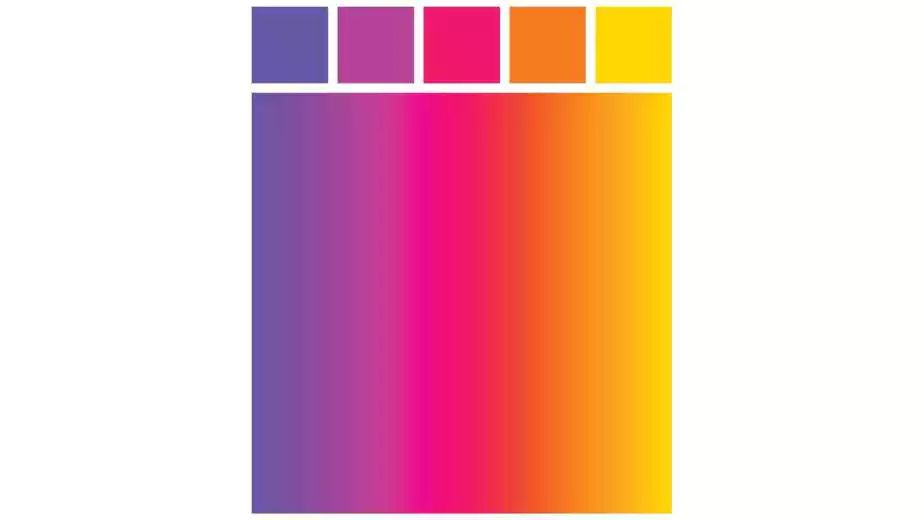Is Pink a Warm Color? Analyzing its Temperature Perception

Color perception is a fascinating field that has captivated artists, scientists, and individuals alike for centuries. The psychology and symbolism of colors play a significant role in our lives, influencing our emotions, moods, and even physiological responses. When it comes to categorizing colors, we often associate certain hues with warmth or coolness. However, the classification of pink as a warm or cool color remains a subject of debate. In this blog, we will delve into the world of pink, exploring its origins, associations, and the scientific understanding behind its temperature perception, finding out if is pink a warm color or not.
1 Understanding the Color Spectrum
To comprehend the warmth or coolness of colors, we must first grasp the concept of the color spectrum. The visible light spectrum consists of various wavelengths, with each wavelength corresponding to a specific color. These colors, when combined, create the white light we perceive. The color spectrum is often depicted as a circular color wheel, consisting of primary colors (red, blue, and yellow), secondary colors (green, orange, and purple), and tertiary colors (a combination of primary and secondary colors).
2 The Warm and Cool Color Theory

Traditionally, warm colors are associated with those hues that resemble fire, the sun, or warm natural elements. Warm colors are believed to evoke feelings of warmth, energy, and excitement. These colors are predominantly found in the red, orange, and yellow regions of the color spectrum. On the other hand, cool colors are associated with calmness, serenity, and soothing sensations. These colors are typically found in the blue, green, and purple regions of the spectrum.
3 Pink: An Enigma Among Colors
Pink is a unique color that has long puzzled experts due to its ambiguous position on the color spectrum. Pink is a tint, which means it is created by adding white to a base color—in this case, red. In terms of its position on the spectrum, pink is considered a desaturated, lighter version of red. This begs the question: Is pink a warm color or a cool color?
4 The Case for Pink as a Warm Color

Cultural Associations
Across many cultures, pink is often associated with warmth, love, and affection. It is commonly linked to femininity and is often used to represent compassion, nurturing, and sensitivity. This cultural association of pink with warm emotions contributes to the perception of pink as a warm color.
Warm Undertones
While pink itself is a lighter shade, it is primarily derived from the color red, which is undeniably a warm color. The presence of red undertones in pink contributes to its association with warmth.
Emotional Response
Many individuals report feeling a sense of warmth, comfort, and positivity when surrounded by pink. This emotional response aligns with the characteristics typically attributed to warm colors.
5 The Case for Pink as a Cool Color

Tinting Process
Pink is created by adding white to red, which can be perceived as a cooling process. The addition of white dilutes the intensity of red, resulting in a softer, more delicate hue. This dilution is akin to the cooling effect of adding ice to a warm beverage.
Color Temperature
In terms of color temperature, pink can be perceived as cooler than red. As colors transition from red to pink, they gradually lose their intensity and appear less vibrant. This loss of intensity contributes to the cooler perception of pink.
Cool Associations:
While pink is often associated with warmth culturally, certain shades of pink, such as pastel pinks or cooler-toned pinks, can be reminiscent of cool elements such as flowers, ice, or the sky at dawn. These associations with cool elements can influence the perception of pink as a cool color.
6 The Scientific Perspective
While cultural associations and personal experiences contribute to our perception of color, scientific research also provides insights into the temperature perception of pink. It is important to note that color perception is a subjective experience, and individual differences can influence how we perceive and interpret colors. However, some scientific studies have shed light on the topic:
Color Temperature Measurements
Color temperature refers to the warmth or coolness of a light source. It is measured in Kelvin (K). Research has shown that pink hues typically have lower color temperatures compared to pure reds. This suggests that pink is perceived as relatively cooler in comparison.
Physiological Responses
Several studies have examined the physiological responses elicited by colors, including pink. While the results are not unanimous, some research suggests that exposure to pink can lead to decreased heart rate, blood pressure, and feelings of relaxation. These responses align with the calming effects associated with cool colors.
Color Psychology Studies
Color psychology explores the effects of colors on human behavior and emotions. Although the field is complex and subject to interpretation, studies have found that pink can evoke a range of emotions, including feelings of warmth, comfort, and tranquility. This suggests that pink’s temperature perception may be influenced by individual and contextual factors.
7 The Influence of Context

The perception of color, including pink, is greatly influenced by its surrounding context. The colors adjacent to pink can create contrasting or harmonious effects, further shaping its perceived temperature. For instance, when paired with warm colors like red or orange, pink may appear relatively cooler. Conversely, when juxtaposed with cool colors like blue or purple, pink can appear warmer.
8 Personal Perception and Cultural Variations
Color perception is highly subjective, and individual experiences and cultural backgrounds play a significant role in shaping our understanding of colors. Personal associations, preferences, and cultural symbolism contribute to how we perceive and interpret pink’s temperature. It is essential to recognize that different cultures may have diverse perspectives on color symbolism and temperature perception.
9 Conclusion
In the realm of color perception, pink remains an intriguing enigma. While it is derived from red and shares warm undertones, it also exhibits characteristics associated with cool colors. The perception of pink as warm or cool is influenced by a combination of cultural associations, personal experiences, and scientific findings. The context in which pink is presented and individual differences in color perception further contribute to its perceived temperature.
Ultimately, it is crucial to acknowledge that color perception is subjective and can vary from person to person. The beauty of colours lies in their ability to evoke emotions, inspire creativity, and create meaningful connections. Whether we perceive pink as warm, cool, or somewhere in between, it continues to captivate our senses and add vibrancy to our lives.
Also, if you want to make use of pink colour, make sure to check our blog on how to make colourful paper fans. Happy crafting!
Community Q&A
About This Article
Hardik Jethva is an experienced author of the BestCheck family. Working from scratch, he has developed an amazing interest in testing and writing about different products in a transparent manner. His writing skills got more audience for BestCheck. Apart from his professional life, Hardik has his eyes on travelling, meditation, eating healthy food, socializing with people, and car rides.
This article has been viewed 563 times.



